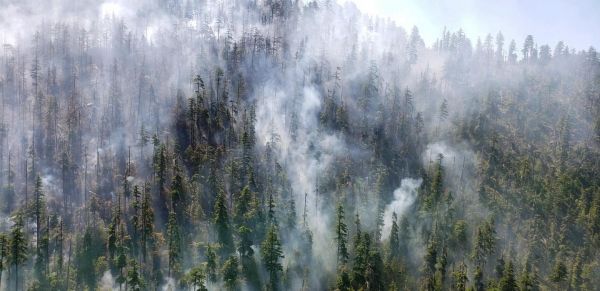Roadless national forests in the American West burn more often and at a slightly higher severity than national forests with roads, but the end result for the roadless forests is greater fire resilience, Oregon State University researchers say.
The findings, published today in Environmental Research Letters, provide a key piece of the puzzle for a region trying to develop better approaches to living with fire in the wake of a 2020 fire season that brought historically disastrous blazes.
Limiting smoke exposure and reducing risk to water supplies, habitat and human infrastructure from huge, uncontrolled fires are important goals of policymakers, said James Johnston, a researcher in the OSU College of Forestry and the study’s leader.
Mechanical fuel treatments – piling brush, thinning dense stands of trees, etc. – are a common tool for meeting those goals, but more than half of all fires, including most of the largest ones, burn mainly in roadless areas, where mechanical treatments are usually prohibited.
“The extent of fire where management options are limited makes clear the need to adapt to, rather than overcome, fire,” he said.
Read more at: Oregon State University
Beachie Creek fire 2020 when it was still small. (Photo Credit: James Johnston, OSU College of Forestry)


